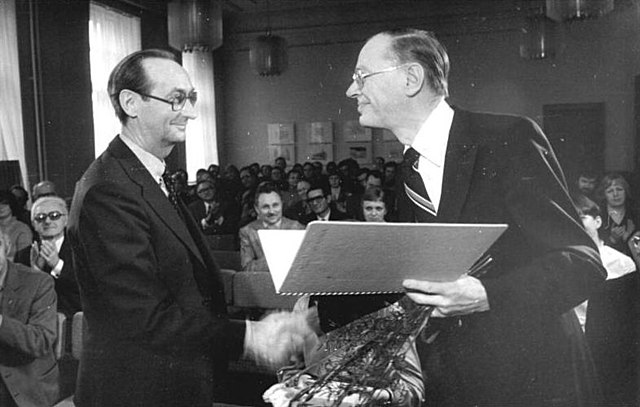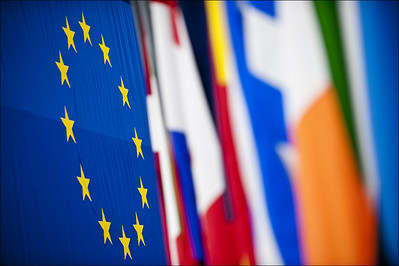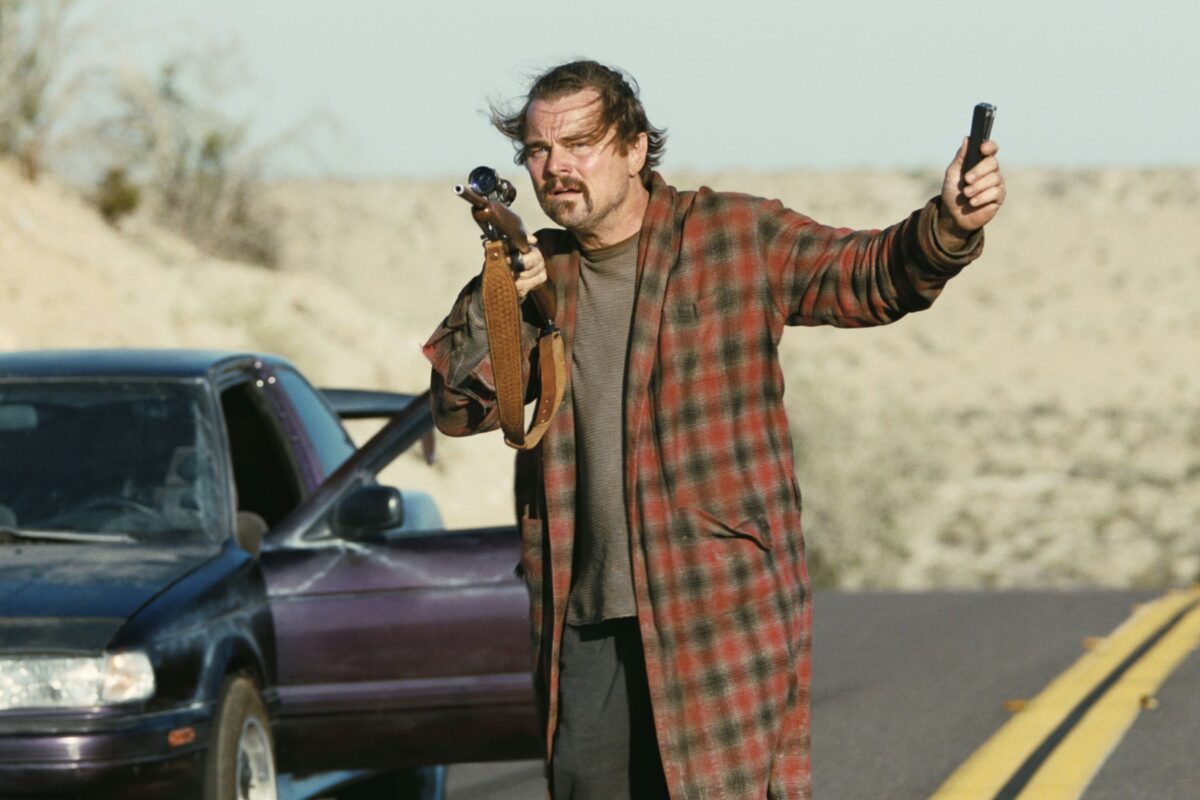Next year Bad Frankenhausen, an otherwise sleepy little town in Thuringia, will be crowded. For May 15th 2025 marks the 500th year anniversary of the great 1525 Peasant War. The town’s ‘Panorama Museum’ sits atop the battle-field of Mount Battle or ‘Schlachtberg’. There were many peasant wars, as Frederick Engels described in 1870. This one provoked the most savage butchery of the peasants in their greatest uprising.
I will review that war and the museum, and then consider whether the GDR painter Werner Tübke (1929-2004) was a bourgeois or a socialist artist. Or neither.
What happened at Bad Frankenhausen?
Grinding poverty and exploitation sparked many peasant wars or Jaqueries. In Europe these were directed against feudal lords including the clergy. The “peasants” of the 1525 Peasant War, were actually a united front of peasants and early city plebians. Müntzer had welded their disgruntlements together. The plebians of Bad Frankenhausen were formed from the salt-worker knechts (labourers or sometimes slaves) whose labour enriched the princes and the clergy.
The insurgent leader Thomas Müntzer (or Muenzer) was born in 1498. He differed from Luther in espousing a ‘communism’. Luther began the Reformation against the Catholic Church, but flinched at thorough-going reforms, and compromised with the feudal exploiting classes. Müntzer in contrast continued his early struggles from early on against reaction to a bitter end. Inspired by “the chiliastic works of Joachim of Calabria, he became a popular preacher. Engels Chapter Two
“Chiliasim” or “Millenialism” was the popular belief that a Messiah would arrive to establish a new world of freedom – and before the “Last Judgement”. Chiliasim included the doctrines of Anabaptism, and the Hussites. Müntzer sought those who had survived the persecutions by the feudal princes and clergy from earlier rebellions. Defending them, Müntzer had to flee both Thuringia and later Prague. Müntzer argued to extend Luther’s Reformation against the corrupt clergy, by including “the sword”. He became “a direct political agitator.” While primarily attacking the church, he also targeted Christianity itself. Calling for “heaven in this life”, he praised “reason” as true “faith”. According to him:
“the task of the believers to establish Heaven, the kingdom of God, here on earth. As there is no Heaven in the beyond, so there is no Hell in the beyond, and no damnation, and there are no devils but the evil desires and cravings of man. Christ, he said, was a man.”
He had entered atheism and communism, and Engels summarised that:
“By the kingdom of God, Muenzer understood nothing else than a state of society without class differences, without private property, and without superimposed state powers opposed to the members of society.”
The confrontation was inevitable, as was the disparity between the opposing forces:
“Muenzer (had)… 8,000 men and several cannons… The men were poorly armed and badly disciplined. .. The princes promised amnesty should they deliver Muenzer alive. Muenzer assembled his people in a circle… A knight and a priest expressed themselves in favour of capitulation. Muenzer had them both brought inside the circle, and decapitated… (but) the princes’ soldiers had encircled the entire mountain… cannon balls and guns were pounding the half-defenseless peasants, unused to battle… over 5,000 were slaughtered… Muenzer, was captured… put on the rack… and decapitated. He went to his death with the same courage with which he had lived. He was barely twenty-eight when he was executed.” Engels Chapter six
Entering the ‘Panorama Museum’.
The museum website presents the monumental painting “Early Bourgeois Revolution in Germany”. Visitors enter a dark, very large circular room from below. As people lift their eyes to the walls, most are stunned on being greeted and surrounded by a unique circular painting. The canvas is fourteen metre high spanning a giant 123 meters to depict 3,000 figures. At the bottom level a simple parallel perspective is used, but the upper part of the painting has a central perspective leading onto a seemingly endless horizon. Werner Tübke with one assistant took eleven years (1976-1987) to complete it.
The Museum opened in 1989, shortly before the GDR collapsed.
Initially a long awe-struck period is experienced as one’s wits slowly recover from the sensory assault. Slowly comparisons come to mind. The content matter of Pieter Brueghel the elder (1525–1569) and Hieronymous Bosch (1450-1516) is wedded to the giant scale of Michaelangelo Buonarroti’s (1475-1565) Sistine Chapel ‘Last Judgement’. Here are Breughel’s peasants and plebeians preyed on by princes and clergy. They play out the real every-day earthly life of -accounting of Heaven and Hell, in contrast to Michaelangelo’s promised eventual end. Accelerating the imagination are Boschian symbolisations.
The result is an extreme realism mixed with such Boschian imagery as to create an intense vivid and highly ‘expressionist’ image. It is not ‘naturalist’ art, but most figures are evidently real people. A partisan painting it is the opposite of neutral. If you enter from the left passage, you are confronted by Müntzer in the center between swirling, warring parties. Tübke used his face from a medieval wood-cut, but paints Müntzer lowering the rebel-flag with its peasant boot insignia. Müntzer realises that the surrounding princes, and mercenaries have wiped out his forces. He stands under a rainbow enclosing the Schlactberg and the green battlefield, signifying hope and a binding with ‘God’.
Undoubtedly the content of this painting is progressive. But Tübke is not about to explain details. In the film “Werner Tübke” (Director Reiner E. Moritz, ArtHaus Musik, RM Arts 1991) he bluntly says:
“It is not my goal to lecture people through the visual arts, or even to enrich them… I don’t employ methods that are popular or the easiest to understand. But I work strictly according to what gives me pleasure. I have no sense of mission and I don’t ask whether I’m understood or not.“
Does this forthrightness not remind one of Käthe Kollowtiz’s response to being castigated by the KPD? Unsurprisingly, one of his teachers Tübke most fond of, Katharina Heise, was a sympathiser and follower of Kollowitz.
Returning to the picture, how does one read this spectacle? For me one central message of the whole drama is that one must act for justice, even if action leads to failure. As if this is not powerful enough, hundreds of acts are performed by meticulous writhing figures. An excellent audio guide helps interpret them, in several languages. But the museum site states:
“Instead of a painting that illustrates the history of the “early bourgeois revolution in Germany” and educates the visitors in the sense of the state, he wants to focus on painting. In this way, the original concept recedes into the background; Tübke creates a picture that evades being fixed on a single statement.”
I dispute that. As mentioned an abiding theme is justice and the exploitation of the people. Another is the sway of reason as opposed to the play of chance. Let us briefly scroll through fragments.
Witness an elderly peasant woman and her husband bringing eggs, a goose and other victuals – as a tax to their feudal lords dining on a long table. A finely dressed young lady aristocrat glances over her shoulder dismissively, but the peasant woman witheringly holds her gaze. Over there a ship is stranded on dry land as a boatman vainly paddles to ferry the dignitaries of state. Here a clergyman is strung up on a dead tree surrounded by angry and mocking peasants. Wait! there are three gaming tables – at one kings and emperors (Kaiser Kari V and Francis I of France) play poker for Northern Italy – the English king has arrived too late! There soldiers pillage houses of peasants. Here the finely dressed Pope is roped in struggle against Luther while named academics debate in the guise of pigs, foxes and rats. But Luther is also shown as a two-faced Janus – one talking to poorly dressed people, the other face ignoring them.
Scattered throughout are several ‘Narr’, or fools or jesters. They comment on the cruelties that unfold. But as they prance about, an opposing path not taken is shown. Just above Tübke’s signature, and below Müntzer’s flag-lowering, is shown a huge Well of Reason. Around it are figures of the German Renaissance – including Hans Hut and Melchior Rinck both Anabaptist leaders; Hans Sachs a shoemaker-poet; Tilman Riemenschneider the wood-sculptor; Martin Luther and the painter Lucas Cranach; Albrecht Dürer the artist; Nicholas Copernicus the physicist-astronomer; Paracelsus physician and chemist; and the merchants Jakob Welser and Jakob Fugg. Yes an eclectic and sometimes contradictory mixture – Luther and Anabaptists? Tübke presumably sees no straight line in history.
Onlookers are enthralled, moved and fascinated, and wish to learn about the acts depicted. It is in short, a masterpiece that engages with its audience.
Where is Tübke to be placed in art?
How did this masterpiece come about, how does Tübke’s worldview fit into the art history of the GDR?
In 1976 Tübke was Rector of the Academy of Visual Arts in Leipzig, when he was invited to do this by the GDR government. Before he accepted he demanded and obtained complete freedom in execution. Three years of painstaking research into the 15th-16th century (clothing, materials, painting etc) allowed him to build a working model scaled down to a tenth, which was endorsed as ‘historically authentic’:
“The first think I did was to refuse to use the set pieces, or to use central perspective… Then came the three year phase of invention in which I made the 14.2 m version… Following extensive theoretical studies I noted down, as if in a very large diary, the mood of the week, the month, painted in ancient robes. “
Mortiz, Around 30 minutes 55 sec
“I was able to assert my concept without much trouble. I’d half finished the small version when the employer came from the Ministry of Culture, and 14 days later I received a letter of acceptance. Strangely enough it all went very smoothly.”
Mortiz Ibid; at about 34 minutes
Well before the Panorama, Tübke was already deeply immersed in the styles of the 15th-16th century – in particular Italian mannerism.
“My interest lies exclusively in art produced before Modernism. Up to Delacroix, roughly… It just turned out that way. There’s no concept behind it. I base my work on art from earlier centuries, but in my own way. I think it is legitimate… In particular it is the transition periods, Italian Mannerism, for example, or old German masters, who have always inspired me. I don’t think you can choose what you relate to and how you do it.
“Moritz, about 0.45 sec
“This world is not unfamiliar to me. Particularly the Old Testament. I feel very at home in that entire world. I can’t be more precise, nor would I want to be.“
Film Dir. Moritz 5min 0s
He joined the Workers Party in 1950. But he was attacked for his passion for 15th-15th art in 1956 (“backward-looking’, ‘eclectic’) and lost his lectureship at the Leipzig Art Academy. He was reappointed in 1962, where later his students defended against another dismissal:
“I was dismissed in 1957 for allegedly doing Western Art as it was then called, Madness! Or Surrealism. I returned to the Academy two years later, and in 1967 I was almost dismissed again, for the same reasons, but the students protested so I ended up staying.”
Film Dir Moritz. 11 min 45s
“Critics spoke of a misunderstanding of heritage reception and warned that eclecticism was contrary to Socialist Realism. … I don’t think that discussion affected my work. I admit that in the 50s and for quite some time, this tiresome, silly discussion did take place. And it was very destructive to artists, I have to say. It was never a big problem for me, it was terroristic and extremely tiring on a personal level. one can’t imagine it today.“
Film Dir Moritz. 19 min 30s
He resisted moving away despite offers:
“Working as a painter in this country was not easy. In the 50s and 60s there was a lot of interference, a lot was changed for ideological reasons. Nonetheless it was possible to do what you felt was right even if it meant less money. But you can make do. There was also many opportunities though I won’t be specific, to leave the country. There were good offers, food financial offers with villas in Hamburg and so forth, but I remained in Leipzig where the children are. It’s not that I cling to Leipzig, but I never considered leaving the GDR. For whatever reasons I simply did my work and it worked out. But it wasn’t easy. It started getting easier after 1970, .. my first exhibition in Milan and northern Italy. And then as is common in Germany and other countries it was officially recognized that I had something to offer.”
26 minutes 50 seconds
He became a professor in 1972, then became Rector of the Academy. He produced a series of works on Hiroshima, and in 1965 his works on fascism received plaudits. Awarded a commission on “Workers and the Intellectuals” in 1970 for Leipzig university, he placed the leaders of Karl-Marx University and Party officials in the background. The brings students and workers together, placing the carpenters in front.
After the Pinochet coup in Chile he painted 1974 “Chilienisches Requiem”. Above it Tübke placed the words of Pablo Neruda “Nothing will be forgotten, ladies and gentlemen, and through my wounded mouth the others shall continue to sing”.
By now I hope the reader is convinced that his paintings confirm that whatever criticism he faced, he was clearly a committed progressive. In fact I think he was a committed ‘socialist’. However, what category was his art is to be classified in? I propose it was a unique form of a marriage between socialist content, realist but also ‘magical’ realist forms.
His positions were not taken alone, but were those of the so-called Leipzig school. This included Trübke, Willi Sitte and Bernard Heisig. The latter said: “in 1972, “We [artists in East Germany] have the chance to take part in a worldview! “( “Why Heisig Matters” p. 5)
David Elliot curated an exhibition of East German art in the UK in 1984, and put it like this: “Heisig, Willi Sitte, and Werner Tübke had been able to “revalidate [socialist realism] not as a style with recognizable physical attributes and finite duration but as an attitude which gave conviction to art.” (April A. Eisman; “Bernhard Heisig and the fight for modern art in East Germany; Boydell & Brewer; 2018. p.5).
Tübke’s art poses a challenge to those who argue that the GDR promulgated an ‘establishment’ socialist realism. Tübke was attacked both in the Ulbricht and the Honecker era. If you believe as I do that neither the Ulbricht or the Honecker governments were ‘socialist’ – how could Tübke’s major works have been state sponsored? The GDR was by the late 1950s part of the Comecon network of states. The original purpose of the ‘People’s Democracies’ moving towards socialism, had been warped into becoming colonial outposts of the USSR revisionist, neo-imperialist state. The camouflage of a ‘socialist art’ tradition was useful to their pretence of being a workers state. That led the GDR to tolerate the Leipzig school.
If you go, and you are not interested in the alleged healing properties of the spas (‘Bad’) – there is little else to do in the town. So an alternative is to stay in Erfurt and do a day trip via regional trains.




